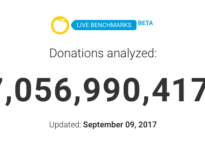You might not have known, but MarketSmart is investing around $1 million in product development over the next six months. Instead of pretending that we’re Steve Jobs and locking ourselves in a dark room to come up with the “next best thing,” we’ve been picking up the phone and calling our clients.
The hope is that by talking to people we’ll be able to identify some common problems and pain points that nonprofit professionals face and help address them by improving our products and services.
It’s been two weeks since our first “product discovery” call and since then we’ve talked with a half dozen or so nonprofit professionals. Our team of two leading up this initiative, myself and my colleague Lizzie, have learned a lot.
We’ve started every meeting with the same question, “We know this request is kind of weird, but tell us about last week. What success did you have? Were there any failures?”
This is a fun question for many reasons. First, you always get the same initial response, “You mean you want to know what I did?” Yes! That is exactly what I want to know! Second, after the initial “Why do they care?” shock wears off, the person asked usually has a lot to say. It turns out people really enjoy talking about what they did last week! And third, everyone’s response to this question will have a similar theme — at one point or another they’ll mention they were in a meeting (if not many) last week.
For two weeks, I’ve heard much of the same across the board. “You want to know about my week?” “Yes,” I respond. “I did x and y and z, but then I couldn’t do p because I was stuck in meetings.” Every. Single. Time. It’s almost like a record on a repeat, “meetings, meetings, meetings.”
Okay, so what does any of this have to do with you? Well, based on my highly scientific study, the odds are that you (or someone you know and love) has been, or will be, or may currently be in a meeting. I’m here to help you have less meetings. Why less meetings? Because then you can focus on other things, like donor stewardship, thinking strategically, or simply not listening to Gerry mumble on about Game of Thrones for 20 minutes at the beginning of every Monday morning, all-staff meeting. (Did you see what happened to Gandalf in the season finale? Wrong show? Maybe? Am I close?)
Wait one second. I’ll be right back. I have to run into a quick marketing team meeting to make sure this blog post fits in with our content schedule. Just give me five minutes, I promise I’ll be right ba…
Why do we have so many meetings?

Before we can propose a solution to have less meetings and ultimately more productive days, we need to first understand why there are so many meetings to begin with. What purpose do your meetings serve?
From my experience talking with hundreds of nonprofit professionals, I’ve been able to categorize meetings into two “buckets” — functional and strategic.
Functional meetings are when people gather to accomplish something. It’s not that you don’t accomplish something in a strategic meeting (you do, kind of). Instead, in a functional meeting you complete something that is part of a larger system or process.
For example, (and this is a real example), let’s say you have three people maintaining three separate spreadsheets with major gift prospect information. One person knows how to bulk import these spreadsheets into the main database, the other two don’t. Every two weeks, the three of you meet and the two who don’t know how to bulk import into the database share their spreadsheets of updated donor contact reports with the person who does the data import.
Every two weeks, for 30 minutes (okay, more like 45) you all meet and update spreadsheets. This is a functional meeting. This is how things operate. Data from the front-line gift officers wouldn’t make it to the main database if it were not for this meeting. It serves a functional purpose.
Strategic meetings are the polar opposite of functional meetings. You know you are part of a strategic meeting when you have to think about “problem solving,” or “planning.” A strategic meeting is not a task within a larger system, rather it is a gathering meant to bring decision makers and stakeholders together for discussion. This can also be used for feedback gathering and ultimately decision making.
You know the new donor management system you have been talking about for the past two years? Yeah, that thing. You remember all those hourlong meetings where you discussed the pros and cons of switching to the new system? Yes? Those were “strategic” meetings. Fun, right?
You may be thinking of a few different meeting types that occur in your day-to-day, and who am I to say you aren’t right, but most of the time meetings take on one of these two forms. With that being said, it becomes more obvious why meetings take up so much time during a workweek. Meetings are almost like the “glue” that holds our week in place.
If we skip the functional “spreadsheet updating” meeting our database gets out of sync. If we don’t discuss an ongoing issue (the new donor management software) it will never get implemented (will it ever get implemented?).
Meetings serve a purpose. You probably didn’t need to read this far into a blog post to know that. So why then is it important that we have less of these get-togethers?
Benefits of less meetings
There are two primary benefits of having less meetings. One nonprofit-specific, one more general. Let’s start with the general benefit: You have more time to think.
Warren Buffett, the CEO of Berkshire Hathaway and great philanthropist reads over 500 pages per day. Buffett estimates he spends as much as 80 percent of his day reading. He’s not alone, Bill Gates reads 50 books a year (and shares his thoughts on each one), and Oprah Winfrey reads and shares a book per month for her book club.

Ultra successful individuals read. Do you read? You’re reading this. Does that count? I guess it does. Glad I could contribute!
But seriously, executives across all industries claim to spend a lot of time doing things that may seem mundane to you and I. Reading, thinking, reading and thinking. These executives and leaders purposefully block off time in their day to do these things because they have an overwhelmingly positive impact on their success.
Instead of constantly focusing on operational tasks, they make time for expanding on their knowledge — of their industry, of the experiences of other thought-leaders and the way they can apply that knowledge to their own life’s work. Of course they still have meetings (at least one would imagine they do), but they go out of their way to create extra time for themselves to think. Powerful stuff.
The second benefit, the nonprofit-specific benefit, of less meetings are more meetings.
Wait, what?
You read that right. For nonprofit professionals a perk of spending less time in internal meetings means you have more time for external outreach (i.e. calling and meeting with donors) .
Depending on your role at your organization this may be something you already do. But, with fewer internal meetings, you now have a few extra hours per week to pick up the phone and engage a handful more donors.
Less internal meetings have two benefits, more thinking time and more donor time, but how do we get there? How do we decrease the number of meetings we have each week?
How to have less meetings
Rather than pretend I am some “time management” extraordinaire (trust me, I get caught up in my own fair share of meetings and other distractions), let’s defer to a more experienced source for advisement, the Harvard Business Review.
“Break Your Addiction to Meetings,” by Elizabeth Grace Saunders is a wonderful piece that I highly recommend reading. There are myriad other articles and blog posts that discuss tactics for reducing your meeting overhead, but Ms. Saunders’ is one of (if not) the best.
Her key points are:
Reduce the number of meeting invitations you accept. Simple enough. She suggests “before accepting a meeting invite, ask yourself, ‘Do I really need to attend?’ If the answer is ‘no,’ decline the meeting…”
Reduce the number of meetings you schedule — and reduce their length. Another “common sense” solution, which Ms. Saunders makes easy to implement with her handy decision tree. See below.

Ask your direct reports to follow good meeting procedure. Aka, “don’t schedule meetings for FYI items that you can communicate via e-mail,” and “send a clear agenda when you send the meeting invitation.” These are two simple tricks you can employ to ensure meetings run more smoothly and take less time, or don’t occur if they’re unnecessary.
Keep your calendar clear by blocking in work time. Last but not least, Ms. Saunders suggests blocking off time on your calendar for working time. With fewer, more efficient meetings, you may be looking at an “empty” calendar. You know that won’t last long, so as Ms. Saunders puts it, “seize the freed-up time before it evaporates.”
Applying this at your shop
Reading this blog post is no guarantee that you will have less meetings anytime soon. But, if nothing else, hopefully it made you think about where your time is spent day-to-day. More thinking time, and more external engagement with donors are good things. Likely, they’re the things you’d prefer to focus on. This blog post should reinforce the notion that it’s achievable.
Consider sharing this article with a colleague or two to help develop the conversation internally. If nothing else, talking with so many of our users has made me realize that meetings consume a lot of time each week. Discuss less meetings at your next meeting. I wish I didn’t have to type that, but it’s the truth.
Good luck!





